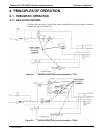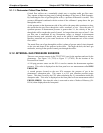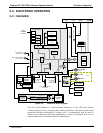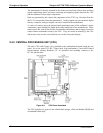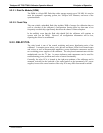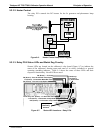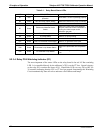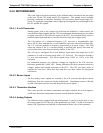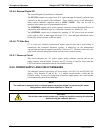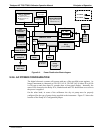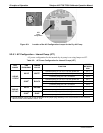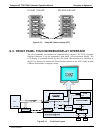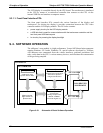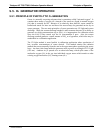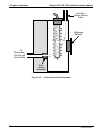
Teledyne API T703/T703U Calibrator Operation Manual Principles of Operation
199
9.2.4. MOTHERBOARD
This is the largest electronic assembly in the calibrator and is mounted to the rear panel
as the base for the CPU board and all I/O connectors. This printed circuit assembly
provides a multitude of functions including A/D conversion, digital input/output, PC-
104 to I
2
C translation, temperature sensor signal processing and is a pass through for the
RS-232 and RS-485 signals.
9.2.4.1. A to D Conversion
Analog signals, such as the voltages received from the calibrator’s various sensors, are
converted into digital signals that the CPU can understand and manipulate by the analog
to digital converter (A/D).Under the control of the CPU, this functional block selects a
particular signal input and then coverts the selected voltage into a digital word.
The A/D consists of a voltage-to-frequency (V-F) converter, a programmable logic
device (PLD), three multiplexers, several amplifiers and some other associated devices.
The V-F converter produces a frequency proportional to its input voltage. The PLD
counts the output of the V-F converter during a specified time period, and sends the
result of that count, in the form of a binary number, to the CPU.
The A/D can be configured for several different input modes and ranges but in this
calibrator it is used in uni-polar mode with a +5V full scale. The converter includes a
1% over and under-range. This allows signals from -0.05V to +5.05V to be fully
converted.
For calibration purposes, two reference voltages are supplied to the A/D converter:
Reference ground and +4.096 VDC. During calibration, the device measures these two
voltages, outputs their digital equivalent to the CPU. The CPU uses these values to
compute the converter’s offset and slope and also uses these factors for subsequent
conversions.
9.2.4.2. Sensor Inputs
The key analog sensor signals are coupled to the A/D converter through the master
multiplexer from two connectors on the motherboard. Terminating resistors (100 kΩ)
on each of the inputs prevent cross talk between the sensor signals.
9.2.4.3. Thermistor Interface
This circuit provides excitation, termination and signal selection for several negative-
coefficient, thermistors (temperature sensors) located inside the calibrator.
9.2.4.4. Analog Outputs
The calibrator comes equipped with one analog output. It can be set by the user to carry
the current signal level of any one of the parameters (see Table 7-4) and will output an
analog VDC signal that rises and falls in relationship with the value of the parameter.
07223C DCN6572



